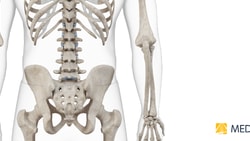Myalgic Encephalomyelitis and Chronic Fatigue Syndrome: What's in a Name?
October 18, 2019
3 min. read

Myalgic encephalomyelitis/chronic fatigue syndrome (ME/CFS) is not a new condition. In the latter half of the 19th century, George Beard and Jean-Martin Charcot were among the first medical practitioners to characterize a health condition that they called neurasthenia.1, 2 In the 1930s, Alexander Gordon Gilliam documented an outbreak in Los Angeles, California, of a health condition that he called atypical poliomyelitis.3
Each of these outbreaks was described by its own region-specific (and sometimes pejorative) terminology. The term epidemic myalgic encephalomyelitis was coined as a result of a Royal Society of Medicine symposium in 1978.4 This development was notable because it was the medical community's first acknowledgement of ME/CFS as a distinct (if still unknown) disease process, rather than a mental disorder.
ME/CFS reached the popular consciousness in the United States after an outbreak in the Reno-Lake Tahoe, Nevada, region in the 1980s. Research involving this outbreak resulted in the name chronic fatigue syndrome. This term is considered to be most representative of the clinical features of the health condition by many clinicians and researchers. However, the term myalgic encephalomyelitis continues to find common usage in the patient community because it best legitimizes some of the body systems involved in the disease process. As a result, our group, the Workwell Foundation, continues to use both terms.
Various attempts to develop case definitions for ME/CFS for research and clinical practice were made throughout the late 20th and early 21st centuries. Its been estimated that at least 20 different sets of case definition criteria have been created.5
Case Definition Criteria of ME/CFS
At the time of this post, there still isnt a blood or imaging test for ME/CFS. This raises the importance of using current case definition criteria to identify potential ME/CFS in our patients. While there is still not a case definition that has universal agreement, the most current and common one used in the United States was created by an Institute of Medicine working group in 2015.6
According to the Institute of Medicine, ME/CFS is characterized by three main features:
Reduction or impairment in ability to carry out normal daily activities, accompanied by profound fatigue
Post-exertional malaise (worsening of symptoms after physical, cognitive, or emotional effort)
Unrefreshing sleep
At least one of two other symptoms are necessary for the diagnosis, including:
Cognitive impairment
Orthostatic intolerance
There are many other common symptoms of ME/CFS, which can include pain, fever, and abnormal immune responses to activity.
The Value of Prompt Diagnosis
While most patients never regain their premorbid level of health or functioning, ambulatory patients report that functional status can be improved with activity-pacing self-management.7 Because a preponderance of ambulatory patients with ME/CFS find pacing to be helpful, it's important to reduce potential delays in reaching an ME/CFS diagnosis.
Healthcare providers should be astute listeners for two items, particularly:
The most limiting symptoms, which may be the basis for determining and prioritizing the best treatment plan8
Symptom reports potentially consistent with post-exertional malaise, which appears unique to ME/CFS among fatiguing health conditions
You can learn more about ME/CFS through the following Medbridge courses:
While it can be tricky to spot the signs of ME/CFS, paying close attention to your patients description of their symptoms helps. Sharpen your clinical communication skills with the Medbridge course "Building Counseling Skills: Active Listening, Empathy, and Gathering Information."
Below, watch Staci Stevens interview a patient about her ME/CFS symptoms in a short clip from the MedBridge course, ME/CFS Part 1: Introduction and Identification.








